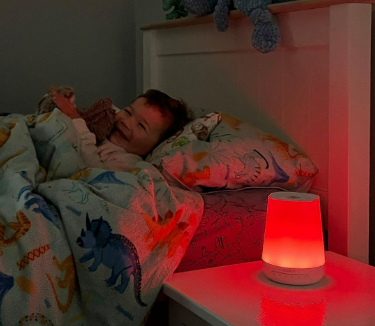24-Month Sleep Regression
- Babee Dreams
- Feb 23, 2023
- 6 min read
Updated: Jun 26
What is the 24-month regression?
The "terrible twos," where toddlers are full of energy, becoming more verbal, highly mobile, and navigating several transitions. These transitions may include potty training, starting childcare, moving from a cot to a big bed, giving up a dummy, or adjusting to a new sibling.
This stage can be challenging for both parents and toddlers. The rapid development and changes often impact sleep, leading to disruptions and setbacks.
What is a regression?
Sleep regressions occur when there are developmental progressions happening in your baby's life. These regressions coincide with the proper physical, cognitive, and emotional development of your baby.
Why does this regression happen?
This regression occurs as your toddler navigates various milestones and transitions. Around the age of two, their imagination also starts to blossom, which can lead to vivid dreams, nightmares, and new fears, like a fear of the dark.
So why does sleep become a struggle?
During regressions, sleep can become a struggle because the new skills toddlers learn can be very exciting for them. Instead of sleeping, they may be more interested in practising and exploring these newfound abilities. Additionally, any change in your child's life, whether significant or minor, can disrupt their sleep patterns for a few days or even a few weeks. The combination of increased excitement and adjusting to changes can contribute to the temporary sleep challenges experienced during regressions.
How long will this regression last
Sleep regressions can usually last anywhere between 2-4 weeks. Hang in there! They're going through so much right now, all they need is consistency and the chance to work on these new skills.
Sleep regressions typically last anywhere between 2-4 weeks. Hang in there! They're going through so much right now. What they need most during this time is consistency and the opportunity to practice and work on their new skills. Remember that it is a temporary phase, and with patience, you can help your child through this challenging time.
Signs of a regression
Fussiness at bedtime
Multiple night wakings
Early rising
Fights naptime
Short naps
Changes in appetite
Clinginess
What else is happening during this sleep regression
Climbing
Throwing/Catching
Kicking balls
Showing interest in games and puzzles
Vocabulary increasing
Independence is continually evolving
Starting to have an imagination and fearing the dark
How to navigate this sleep regression
Do NOT drop the last nap
A common mistake parents make during this period is thinking that they should drop all naps. However, it's important to note that it is not yet time to remove their last nap. It is recommended to hold onto that nap for as long as possible. Remember, this regression is temporary, and if you remain consistent, your child can continue napping until they are 2.5 to 3 years old, potentially 4 years old.
So, don't rush to remove naps during this phase and allow your little one to continue benefiting from them.
Introduce gentle sleep training if needed
Even at two years old, it is still possible to implement sleep training and teach your child how to independently fall asleep. While it may present some challenges, it is certainly achievable. If you're seeking help, I have ways I can help you. I have a downloadable sleep guide and optional plans, which can provide the guidance and support needed to establish solid naps and 10-12 hour nights of sleep.
To be redirected to the 4-24 month sleep guide and plans, you can click here.
Aim for age-appropriate wake windows and other sleep guides
Around 24 months of age, wake windows typically range from approximately 5-6 hours, with the expectation of having one nap during the day. It is important to ensure that the last nap of the day is capped at 3pm to avoid interfering with bedtime.
If you find it difficult to expand your child's wake windows, taking them outside can be helpful. Sunlight exposure can provide a natural energy boost because sunlight suppresses melatonin production(the sleep hormone). Additionally, the outdoor environment can provide sensory stimulation with its vibrant colours and soothing sounds of nature, helping to keep your little one alert and engaged.
Ensure they consume enough calories during the day
To eliminate hunger as a possible cause of sleep disruptions, it's important to ensure that your baby is consuming feeds regularly. Aim to feed your baby every 2.5 to 3 hours during the day, with a maximum interval of 4 hours between feeds.
FOMO
“Fear of missing out.” They have now developed a sense of awareness that things continue to happen if they are no longer around. They pretty much understand that the world continues to spin even when they are no longer participating or around.
For example, imagine everyone in the lounge room playing and having fun, maybe even playing chasey. All of a sudden, you grab them and say, “It’s sleep time” and whisk them away. They now understand that the fun is still continuing, but they are just not around anymore to be involved because they need to sleep. So we can now imagine how they can start resenting sleep.
It’s a good idea to introduce a wind-down time, where playtime stops, lights dim, and all the fun stuff comes to a halt until they go to sleep. Nap and bedtime routines are very important contributors when it comes to sleep.
Avoid anything scary
At this stage, children are capable of experiencing fear of the dark, and their imagination can run wild when the lights are turned off during sleep time. Things that may seem only slightly frightening to adults can be significantly more frightening for them. Scary sounds and sudden surprises can greatly impact their sleep.
Introducing a night light can be beneficial during this time. It is recommended to use a red light as it does not suppress their melatonin production.
Potty patience
When introducing toilet training, try and remain calm, even during frustrating moments. Your little one may be struggling with this process without showing it. While it may seem easier said than done, trust that your child will eventually learn.
Rest assured, they won't be wearing diapers in college! With time, persistence, and gentle guidance, they will master this important milestone.
Transitioning from cot to a big bed
It is advisable to hold off on transitioning from a cot to a bed until your toddler is around 2.5 - 3 years old. It is important to focus on conquering one milestone at a time, as moving out of the cot too early can potentially introduce new or increased sleep problems.
If your child is 2.5 years or older, there are several signs that indicate they may be ready for the transition:
Climbing out of the cot
They're requesting a bed or showing interest in sleeping in one.
Outgrown the cot or if it has become difficult to lift them in and out of it, it may be time to consider transitioning to a bed.
Things you can do to avoid this transition:
Lower the mattress
Use a sleeping bag. Dressing your child in a sleeping bag can make it more difficult for them to maneuver around the cot and potentially attempt to climb out.
Use the day wisely
Taking advantage of the day! Practising any new skills during awake times will make your baby be less likely to be overly excited or stimulated at bedtime.
Encourage routine
Maintaining a consistent routine for your toddler can provide a sense of stability and control, even as they try to push boundaries during this stage. While it's natural for them to attempt to prolong their bedtime routine or introduce new steps, it's essential to establish some limits if you feel they are intentionally trying to avoid sleep altogether.
It's important to strike a balance between meeting their requests and maintaining healthy sleep habits. If you notice their attempts to prolong the bedtime routine, it may be necessary to gently set limits. Clear communication and consistency will help reinforce the boundaries while still allowing for some flexibility within the routine.
Click for tips
At this age, toddlers enjoy having a sense of independence and making choices. Incorporating decision-making opportunities into their daily routine, including bedtime, can help the urge to push boundaries and have a meltdown. When offering choices, it's best to provide limited options, typically two, to prevent overwhelming them. For example, you can present choices like, "Would you like to wear these pajamas or these ones?" By displaying two options. This helps them feel involved in the process.
Consistency
It's crucial to maintain consistency with your child's established routine. Even though regressions can be challenging, it's important to resist the temptation of introducing new habits or making significant changes to their sleep routine. Regressions are temporary phases, but the habits formed during this time can persist.
Do you need help?
Did you know if your baby has a strong sleep foundation, the chances of sleep being disrupted during developmental changes decrease significantly?
I have the tools and resources to help you. I have guides and optional plans that can give you that one-on-one support you need.

I'm the founder of Babee Dreams, a certified sleep consultant, and a mum of three. Everything I share is from evidence-based research, professional training through The Sleep Consulting Academy, real-life success stories from families I've worked with, and the instincts that come from being a mum.
Disclaimer: This blog is for informational purposes only and is not a substitute for professional medical advice. Always consult your healthcare provider for personalised guidance regarding your baby's health and well-being, Babee Dreams does not give medical advice.



